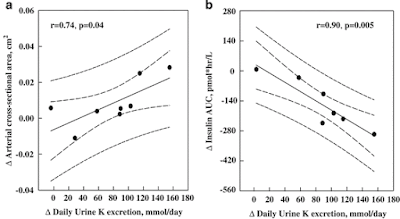A Paleo PB2A
Identifying
cultural trends can unveil the intricacies of any population of people,
providing insight into the changing social and political climate over time. It
appears as though the leagues of internet-surfers are ravenous for the newest
social media and hype, often times throwing any form of critical analysis to
the wind. The high amount of information and change that we face as a techno-centric
community exposes us to so many fads that it can become difficult to identify
the social movements that are truly worth our time. However, there are still
some resources which prove to analyze and dissect new information objectively
in order to provide benefit to a conscious consumer. One such source takes the
form of scholarly, peer reviewed research publications, which provide a wealth
of information about a wide variety of topics. By analyzing a research paper on
a new nutrition trend conducted by the University of San Francisco’s School of
Medicine, one can gain clarity on the conventions that make this type of work
so reliable.
In the world of health and
nutrition, there are numerous strategies, protocols, and diets that aim to help
people lead a more sustainable lifestyle and increase the quality and duration
of their life. However, a great deal of these recommendations prove to be
controversial and disputed by various gurus and health experts claiming to have
the next best thing for the industry. One such approach is the recently
popularized Paleolithic diet, which consists of foods that the human race has
grown accustomed to consuming over the course of thousands of years, devoid of
grains and other foods developed since the agricultural revolution. Espoused by
some and downright demonized by others, UCSF’s article “Metabolic and physiologic
improvements from consuming a Paleolithic, hunter-gatherer type diet” aims to
get to the root of the issue with empirical research on this nutritional
protocol. Diligent observation and analysis of this scholarly article reveals a
variety of rhetorical components which distinguish it from articles written in more
casual contexts.
In terms of structure, the article
at hand displays that research papers most often begin with an abstract to
provide a direction and purpose for the paper as a whole, akin to a thesis
statement found in any traditional academic work. The paper continues with
introduction, methods, discussion, and reference sections, each composed of
different types of information and media which outline the procedure and
findings for the experiment conducted. The introduction section serves to
outline the background details and the controversy and perceived efficacy of
the Paleolithic diet, explaining the ins and outs of the protocol with extensive,
detailed information. This section culminates in a basic research question and
overview of the experiment – “We investigated in humans whether a diet similar to
that consumed by our preagricultural hunter-gatherer ancestors (that is, a
paleolithic type diet) confers health benefits.” This gives the
reader a strong sense of the exigence to the study, as well as the general
direction taken by the researchers to solve the issue.
Following up with a ‘Materials and
Methods’ portion, researchers provide great deal on the experimental procedures
conducted to test the efficacy of this health trend, riddled with facts and
figures which display their findings. This includes a great deal of scientific
jargon meant to establish the ethos of
the team, interweaving quantitative health markers like “cholesterol
decreased by 1.6±0.2 mmol/l (39%decrease)”, and “Mean arterial pressure decreased by 15±9 mm Hg” throughout the text. These pieces of data show how
the researchers aimed to understand the health implications of the diet by
operationalizing key indicators such as cholesterol levels, lipid profiles, and
electrolyte balance. In addition to this analytical data, the article includes
various tables and graphs which give the reader a simple visual representation
of the data under review.
The conventions and fundamental
components of UCSF’s research paper serve to display the essential parts of the
experiment and establish a strong sense of prestige for the researchers
involved. The paper ends with an extensive and organized reference list, an
integral step in the process of verifying their work. By including extensive
data, resources, and details about the research methodology, this article
fulfills its purpose as a scholarly review of the Paleo diet trend and allows
researchers to take a solid stance on the issue with hard, empirical evidence.
Reference:
Frassetto, L. A., M. Schloetter, M. Mietus-Synder, R. C. Morris Jr, and A. Sebastian. Metabolic and Physiologic Improvements from Consuming a Paleolithic, Hunter-gatherer Type Diet. European Journal of Clinical Nutrition. N.p., 11 Feb. 2009. Web. 30 Jan. 2016. <http://www.nature.com/ejcn/journal/v63/n8/full/ejcn20094a.html>.

Hey Tyler!
ReplyDeleteBefore I comment on anything, I just want to say that I really like the style of your writing. Here, I can see your personality embedded in this piece. Choosing words like 'ravenous' and 'jargon,' makes this yours (kind of like your 'move,' I suppose). I appreciate you sharing and investing yourself in your work. It really shows. As for the content, it seems that you really understand the content and the reason behind not only the specific article you chose, but scholarly journals in general. Because of this understanding, this piece was quite well written. Each sentence seems to have a very focused purpose, and every word is said with such precision.
However, part of me wishes that you would play around with structure. I view the thlogs and PBs as fun writing pieces, where we aren’t restricted to the whole “Intro. Paragraphs. Conclusion.” spiel that we have learned to organize our thoughts in. Just a personal opinion. Overall, good work, keep it up!